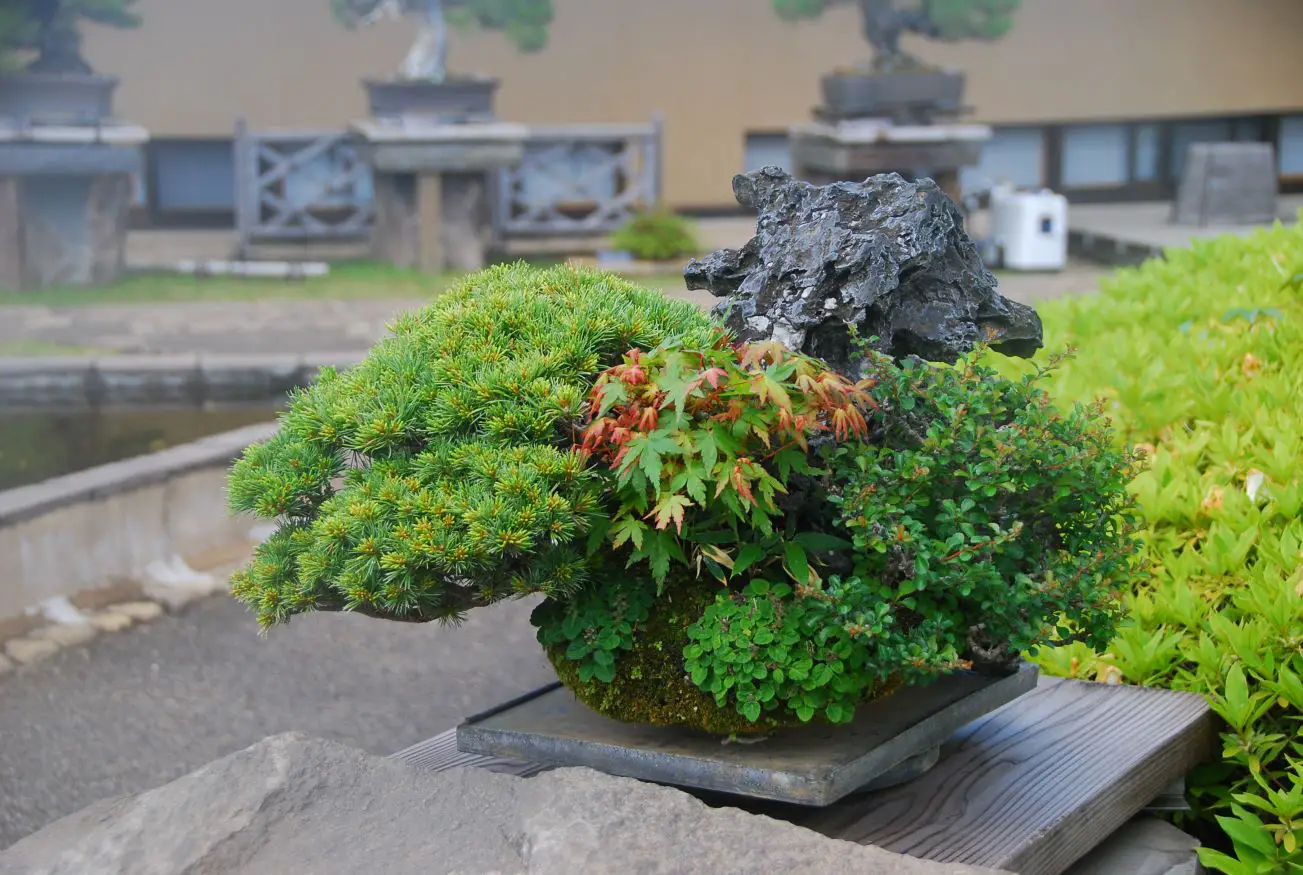Understanding bonsai on rock style
What is bonsai on rock style?
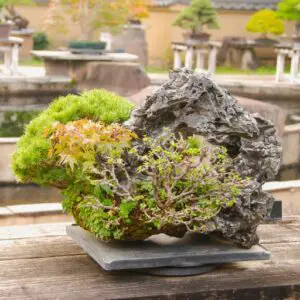
Japanese maple- bonsai on rock
One of the unique and captivating styles of bonsai is the bonsai on rock, which emulates the image of a tree standing on or clinging to steep cliffs in a valley or by the sea.
The bonsai on rock style plants a tree on a rock and uses the rock as a substitute for a pot or trains the roots to grow over the rock into the pot. This style mimics trees growing in challenging landscapes and adds a sense of drama to the bonsai.
Importance of rock in bonsai on rock style
Unlike other conventional bonsai styles which use only trees as materials, bonsai on rock seeks to replicate the natural landscape using a rock alongside trees. This distinction sets bonsai on rock style apart from conventional bonsai styles where the pot merely complements the tree.
In bonsai on rock, the rock itself becomes an integral part of the composition, serving as both the subject and a crucial component in bonsai as a whole. So, the visual coherence and balance between the tree and the rock play a significant role in the overall quality of bonsai on rock style.
By choosing a rock that harmonizes with the tree, the unique qualities of both the tree and the stone are maximized. This way, you can achieve a more visually appealing and impactful bonsai style.
Types of bonsai on rock style
There are two types of bonsai on rock style:
- Planting and attaching tree(s) to a rock without using a pot, and
- Planting a tree in a pot with a rock, with the roots wrapping around and crawling down the stone into the pot.
Rock as a pot (without pot)
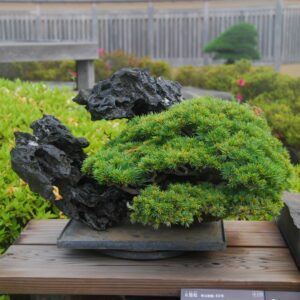
Bonsai on rock style (1)- Attaching trees to rock without a pot
The first type of bonsai on rock style is relatively new in the long history of bonsai. It uses a rock as a pot by putting a small amount of soil in the dents of the rock and planting tree(s) in them. It can be displayed on a tray but does not use a regular bonsai pot.
Root over rock (with pot)
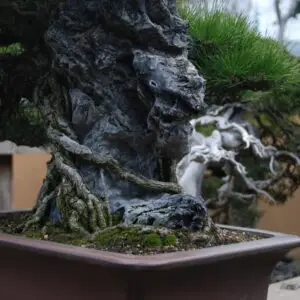
Bonsai on rock style (2)- Planting a tree in a pot with the roots wrapping around a rock
The second type of bonsai on rock style is more traditional. It uses a rock and plants a tree on it with roots wrapping around the rock down into a pot. This type of bonsai on rock is easier to grow than the other type because trees are able to absorb water and nutrients from roots in the pot.
The best tree species for bonsai on rock
Selecting the appropriate tree species is important when creating a bonsai on rock and certain trees possess characteristics that make them better suited for this style.
Here are some key considerations when choosing trees for the bonsai on rock style.
Tree species suitable for bonsai on rock style
Any tree species can be used for bonsai on rock but trees with the following characteristics are desirable for this style.
- Small leaf size
- Abundant foliage
- Thick trunk
- Dwarf nature
- Roots thickning fast
- Lots of fine roots
- Resistant to drying
That said, water-loving trees such as wisteria and magnolia are not suitable for rock bonsai without pots. These trees have a high possibility of death since there is almost no soil on the rock to absorb water.
Species for the first type (rock as a pot)

Bonsai on rock style (1)
- Coniferous trees: Pine (e.g. Japanese black pine, Japanese white pine), Shimpaku juniper, needle juniper
- Deciduous trees: Japanese maple, maple, ivy
- Flowering trees: Azalea, Satsuki azalea, cotoneaster
Satsuki azalea
Satsuki azalea is a good candidate for bonsai on rock style. They are very sturdy and can grow healthy in a little soil on the rock. They can also tolerate heat and cold pretty well. Their small leaves and beautiful flowers make a good contrast to the rock, providing surprising harmony and balance to the composition.
Species for the second type (roots over rock)

Bonsai on rock style (2)
Tree species with abilities to grow lots of fine roots are suitable.
- Coniferous trees: Japanese black pine, Japanese white pine, ezo spruce
- Deciduous trees: Japanese maple, trident maple
Pine trees
Pine trees have sturdy root systems, making them ideal candidates for root over rock style. With careful training, pines can create dramatic and visually striking bonsai.
Trident Maple
Trident maple is one of the best candidates for bonsai on rock bonsai because it has many characteristics desirable for this style.
- Sturdy and able to withstand hard training.
- Many roots are likely to emerge that grow well on the rock.
- Roots grow thick and fast.
Ficus
For indoor bonsai, ficus trees are well-suited for root-over-rock bonsai style. They have a strong propensity for aerial roots, which can be guided and wrapped around rocks.
Considerations when choosing tree materials
There are a few things that you should consider when choosing tree materials for bonsai on rock style.
Age
Besides robust root growth and strong tree vigor, younger trees are preferred over older ones for this style. As you can imagine, being taken out of the pot and attached to a rock is very stressful for trees. Younger trees can handle this stress with more resilience.
Size
Smaller trees in proportion to the rock are preferred over the perfect size tree when creating bonsai in bonsai on rock style. Trees in bonsai on rock style will not be repotted ever or at least as frequently as ordinary bonsai trees. Trees might grow bigger than expected despite your effort of keeping them small.
So, it is better to choose smaller trees to ensure that the balance between the tree and the rock is maintained even after decades of growing them.
Selecting the perfect rock for bonsai on rock
Rock characteristics for bonsai on rock
Choosing the right rock is crucial for creating a visually striking and harmonious bonsai on rock composition. The rock is a vital and indispensable part of the composition and serves as the foundation for the tree’s roots.
Here are some considerations when selecting a rock for your root over rock bonsai.
Shape
It is important to know that the shape of a tree can be changed later but the (basic) shape of the rock cannot be altered once trees are planted. So, choosing the right shape of the rock that is compatible with trees is very, very important.
Rocks suitable for bonsai on rock style:
- Have interesting and intriguing shapes,
- Evoke a sense of natural grandeur, and
- Remain stable without wobbling when positioned.
The shape of the rock should represent the natural environment where the trees grow, such as a cliff, island or hill, like the Japanese viewing stone.
The Japanese viewing stone (Suiseki stones) has a very close relationship with the history of bonsai, both of which evolved from Chinese Penjing. So, understanding what it is and how it’s viewed can be very helpful when selecting a rock for bonsai on rock.
I’ve written an article digging deep into the Japanese viewing stone. If you are interested, please check the link below.
The following shape of rocks is the typical shapes of rocks that are used in bonsai on rock style.
Cliff

Cliff (bonsai on rock)
Rocks that represent cliffs.
Waterfall
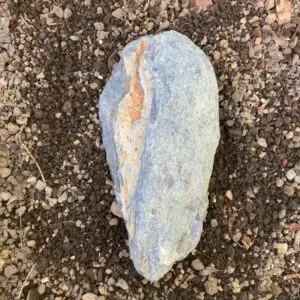
Waterfall stone (Suiseki)
Rocks that represent waterfalls.
Shore

Shore (bonsai on rock)
Rocks that represent rocky shores by the sea.
Island
Rocks that represent an island rising out of a lake or sea.
Water pool
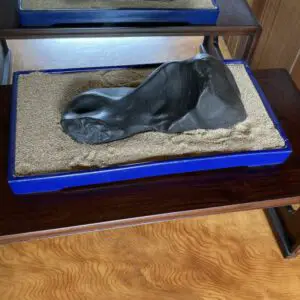
Water pool stone (Suiseki)
Rocks that represent lakes, ponds or water pools.
Plateau
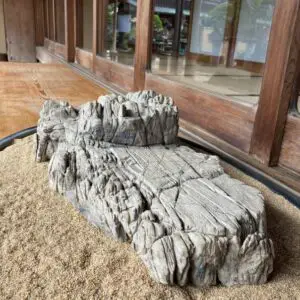
Plateau stone (Suiseki)
Rocks that represent terraced plateau rising toward a hill.
Distant mountain

Rocks that represent mountain ranges as viewed from a great distance.
Size
The rock for bonsai on rock should be proportionate to the tree but the following fact must be considered.
- Trees grow but rocks don’t.
You have to take into account the growth of the tree over the years when choosing the rock because the tree will not be repotted once it is planted on a rock.
Hardness
The rock should be hard enough to withstand environmental conditions. Hard stones are better than soft ones. If the rock is too soft like pumice, it will be easily weathered or dissolved by the acid secreted from the roots.
That said, very hard rocks like precious stones are not suitable as well. If they are too hard, they will not absorb any moisture. They dry out quickly, making it difficult for ornamental moss to spread.
Texture and surface

Texture and surface (rough, jagged and creviced)
Look for rocks with interesting textures and surfaces that mimic the natural weathering and erosion found in nature. Rocks with rough, jagged, or creviced surfaces are good as they can hold soil for the trees.
Color
When choosing the color of the rock, it’s best to pick a calm and dark shade that looks aged. It is important to avoid flashy colors because it can make your bonsai look literally “unnatural”.
Also, it is good to consider the colors of the tree’s leaves and flowers. If you plan to plant a Japanese maple tree on a rock, for example, avoid using a reddish color rock because it would blend in with the foliage when leaves turn red.
Stability
The rock should be stable enough to support the weight of the tree and can hold the tree in position without wobbling or making you worry it might fall down.
If the rock does not have a solid and steady base, you can make it more stable by shaving a part of the rock, attaching a small rock as a weight or making a dedicated stand.
Geological Type of rock for bonsai on rock
Here are some geological types of rock that are often used in bonsai on rock compositions.
Basalt
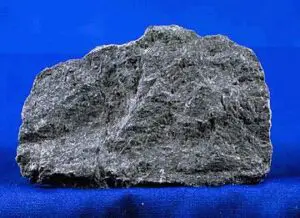
Basalt
Basalt is a dense and durable volcanic rock known for its strength and resistance to weathering. It can provide a solid foundation and is often favored for its dark color and textured appearance.
Tuff
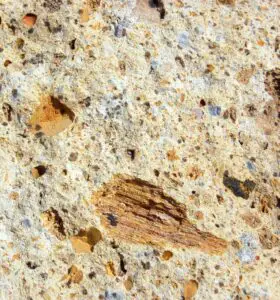
Tuff
Tuff is a type of rock formed from volcanic ash and other volcanic materials that have been compacted and solidified over time. It can be porous like pumice but there are some tuff that are more hard and resistant to erosion. It exhibits a range of colors like green and red, often providing a weathered appearance.
Schist

schist
Schist is a metamorphic rock characterized by its foliated texture, resulting from the transformation of pre-existing rocks under high pressure and temperature. It can have a layered appearance and may feature attractive mineral compositions, adding visual interest to bonsai on rock compositions.
These are just a few examples, and there are many other types of rocks that can be suitable for bonsai on rock style. It’s important to consider the shape, size, hardness, texture, color, and overall visual harmony between the rock and the tree and that is all you need to do when selecting the rock.

